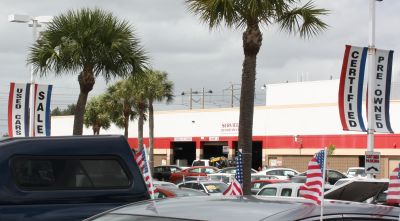Inspecting a used car
Finding a trouble-free used car has nothing to do with luck and everything to do with applying good research and investigative skills. Knowing how to spot potential problems and determining how reliable a used vehicle is can save you from expensive automotive headaches down the road. The following advice can help you to avoid a lemon and find a good value.
Homework
To reduce the risk of purchasing a trouble-prone vehicle, identify models with a good reliability record before you begin shopping. Consumer Reports’ annual subscriber survey provides exclusive real-world reliability information that can help you narrow your selections. See our list of the best and worst used cars. Also read the reliability-history charts that accompany most of the car model pages to get a more detailed view at how specific vehicles have held up in 17 trouble areas, as well as overall. If the car you’re interested in is known to have certain trouble spots, you know to pay special attention to those components during inspection.
Read the window sticker
The Federal Trade Commission requires dealers to post a Buyer’s Guide in every used vehicle offered for sale. Usually attached to a window, it must contain certain information, including whether the vehicle is being sold “as is” or with a warranty, and what percentage of repair costs (if any) the dealer is obligated to pay. The Guide information overrides any contrary provisions in your sales contract. In other words, if the Guide says that the vehicle is covered by a warranty, the dealer must honor that warranty. If any changes in coverage are negotiated, the Guide must be altered to reflect them before the sale.
Inspection
No matter whom you buy from, always look over the vehicle thoroughly and, if possible, take it to a mechanic for a complete inspection. Dress in old clothes and give the car a good going-over. You can learn a great deal just by using your eyes, ears, and nose.
Exterior
Body condition. Check each body panel and the roof, looking for scratches, dents, and rust. Examine the lines of the fenders and doors. Misaligned panels or large gaps can indicate either sloppy assembly at the factory or shoddy repair. The paint color and finish should be the same on every body panel.

Solving issues with your car dealer
Your rights and what to do if you bought a vehicle from a car dealer and there’s a problem, such as faults, misleading statements and money owing.
If there’s a problem with your car after purchase and it’s not your fault, you have more options if you bought from a car dealer. This is because buying from a dealer gives you many more consumer rights than if you buy privately.
Dealers must:
comply with the Consumer Guarantees Act (CGA), which gives you guarantees for new and used vehicles
comply with the Fair Trading Act (FTA) and not mislead you — if they sell online, they must tell you they are a car dealer
be registered and comply with the Motor Vehicle Sales Act (MVSA)
display an accurate Consumer Information Notice (CIN) on used vehicles
This applies whether you pay cash, get the car as a gift or buy on lease or on finance. You have these rights no matter if you buy from a car dealer online, from a car yard or at an auction. (Note: a car market operator – sometimes called “a park and sell” operator) is not required to be a registered dealer.
The CGA guarantees mean the vehicle should be:
of acceptable quality – reasonable in look and finish, durable and safe
fit for purpose – either generally or to meet a specific purpose you told the dealer before you bought the vehicle
as described – match the description in advertising or anything the dealer said at the time.
Tricks Up Your Car Dealer’s Sleeve
Auto dealers have lots of ways to make the most off of every sale. Common car dealer tricks range from interest rate markups and dealer add-ons to longer and longer loans can drive up the cost of buying a new car or truck
Preying on your lack of information.
There’s nothing a salesperson loves more than a clueless car shopper. You can’t negotiate a fair price for a vehicle when you don’t know what that price should be.
Making it all about the monthly payment.
Salespeople often ask potential buyers what’s the biggest monthly payment they can afford. With that number in hand, they’ll calculate the most you can possibly spend and still hit that monthly payment by dragging out the loan for as long as possible
Then you’ll be shown cars and trucks in that price range, which is often higher than what you wanted to spend, while you’re reassured that a better ride is well within your budget.
Imposing finance charge markups.
You’ve picked the car you want to buy, and now the finance manager is searching his computer for the best deal on a loan. The dealership is not required to tell you the cheapest loan you’ve qualified for and can legally pad the interest rate with a couple percentage points for themselves.
Used Car Purchases: What to do When Your Car Does Not Work Properly
Should I read this?
Yes, if your used car breaks down or needs costly repairs soon after you bought it from a dealer. We talk about some state and federal laws that may help. If you want to do more research, we list these laws at the end of this publication.
What is an implied warranty of merchantability?
It is a warranty that gives you the right to expect that your car will be:
fit for ordinary driving purposes for a reasonable time.
reasonably safe and without substantial defects.
the average quality of similar cars sold under similar conditions by other sellers in the same price range.
Is there a checklist showing what an implied warranty covers?
No. What is acceptable quality for one used car may not be for another. You should take into account things like:
how much you paid for the car
its age
its mileage
the kinds of problems you are having
when these problems happened
No. Even if they sold you the car “as is,” you only gave up the implied warranty of merchantability if both these are also true:
You and the dealer must have expressly negotiated the waiver and reached an agreement that your car does not come with an implied warranty.
The dealer must give you a written statement of the particular characteristics or parts of the car not under warranty

Buying a Used Car
Buying a used car can be a tricky process to navigate because no two used cars are the same. Each car has it’s unique history which can either work in your favor or become your biggest nightmare. In addition to the steps required to get a good deal on a new car, when buying a used vehicle there are additional steps you must be aware of.
One of the most important steps is to make sure to run a used car history report in addition to having a certified mechanic inspect the car on a lift. Why should you spend your hard earned money on a mechanic? It’s better to pay for a mechanic now than spend thousands on repairs later.
Find the Right Used Car for You
This step may seem obvious but you shouldn’t just go out to used car dealerships and start the shopping process. First you should search the online used car classifieds. Go to the local newspaper websites to view the automotive classifieds to view ads for cars that are close to you. However, to get the largest selection we recommend that you use the larger sites with thousands of listings like the ones mentioned below.
Investigating the Car’s History
This is the most important tip to follow when buying a used car. Whatever you do, you should never buy a car without first verifying what you are buying by running a history report. I get a ton of emails from people that ended up buying a used car and later finding out it had been wrecked. There are body shops that are professionals at making a car look good. It can happen to anybody. If the VIN isn’t clearly listed in the ad and the seller won’t give it to you then move on to the next car. They are most likely trying to hide something. Since you are normally buying a used car “As Is,” you will want to know about any problems before the purchase
Financing a Used Car
Financing is handled differently depending on whether you are purchasing from a dealership or a private party. Either way, most banks will not give you a loan for a car older than 4 or 5 years. In general, you will pay at least 2% higher APR for a used car than you would on a new car loan but you can offset this by using an online lender that specialized in financing used cars such as the ones we recommend. Try to have your credit score over 680 because you will be considered a prime borrower and get the lowest possible APR. If your credit is really bad you might want to try and repair it before you buy a car.